This afternoon we visited Elizabeth to have a look at her work on a camellia shrub on which she had sought Jackie’s advice yesterday, and to invite her to dinner this evening. She had done a good job and was pleased to accept the invitation.
On this drizzle-dismal day we drove through increasingly descending precipitation for a short while.
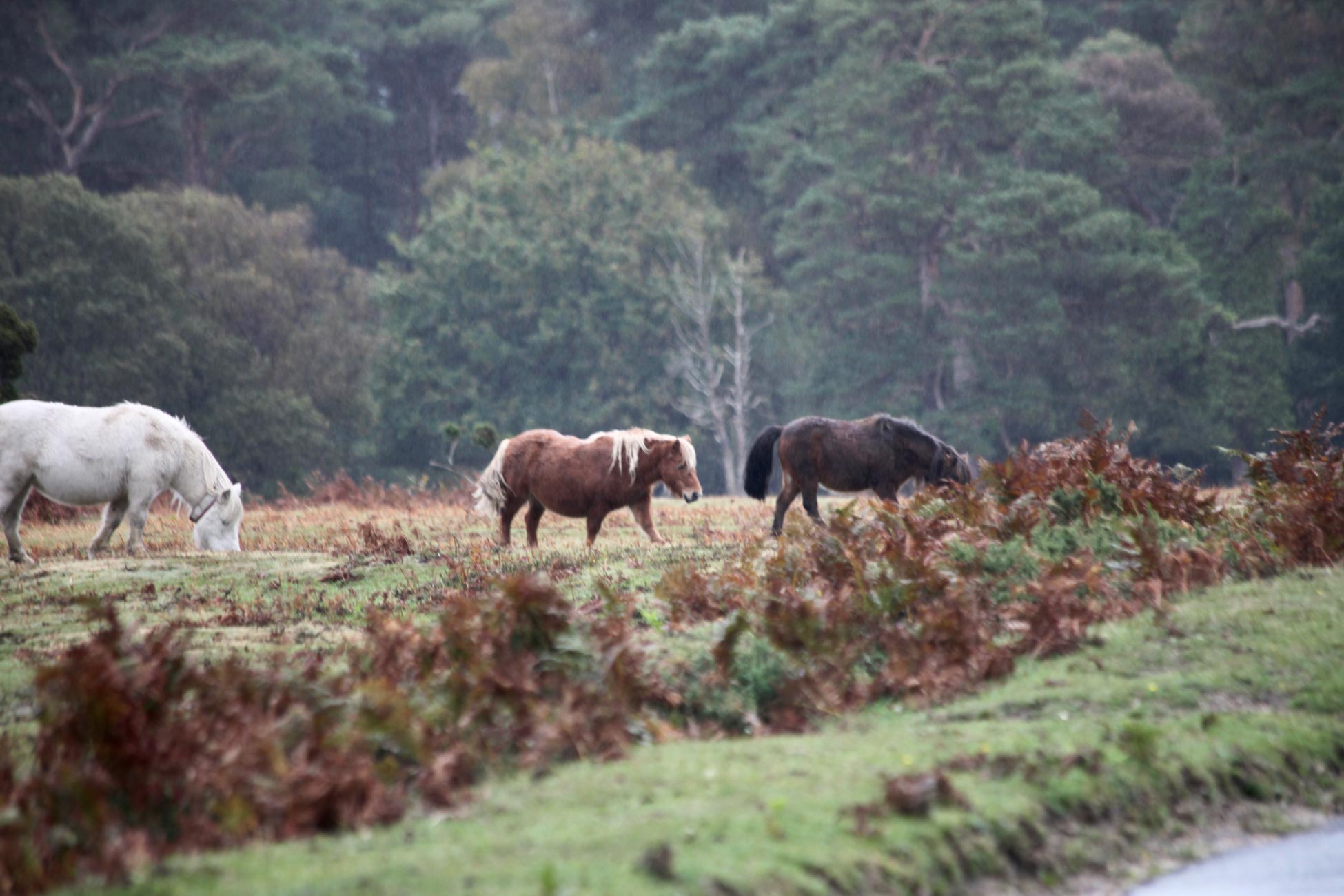
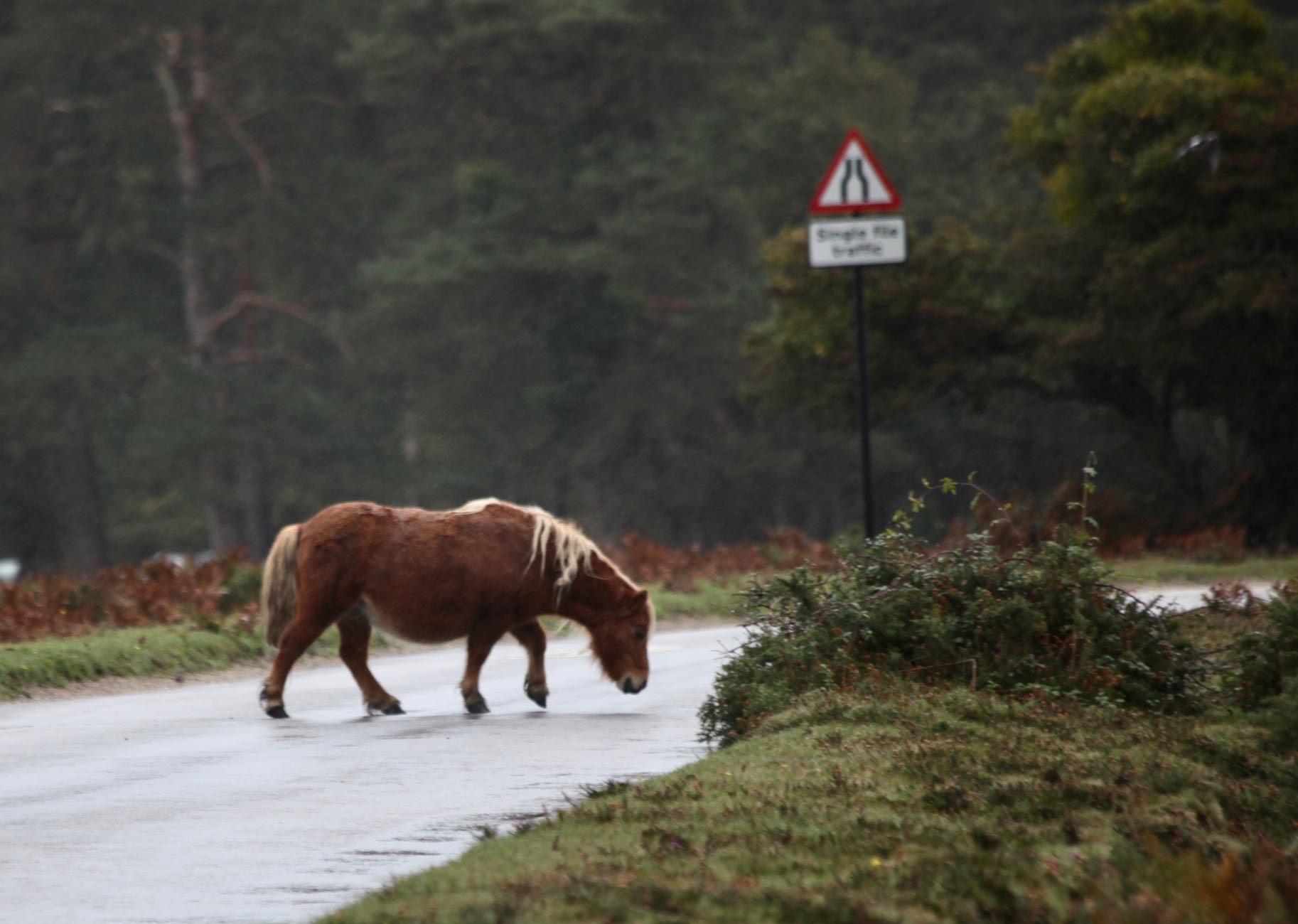
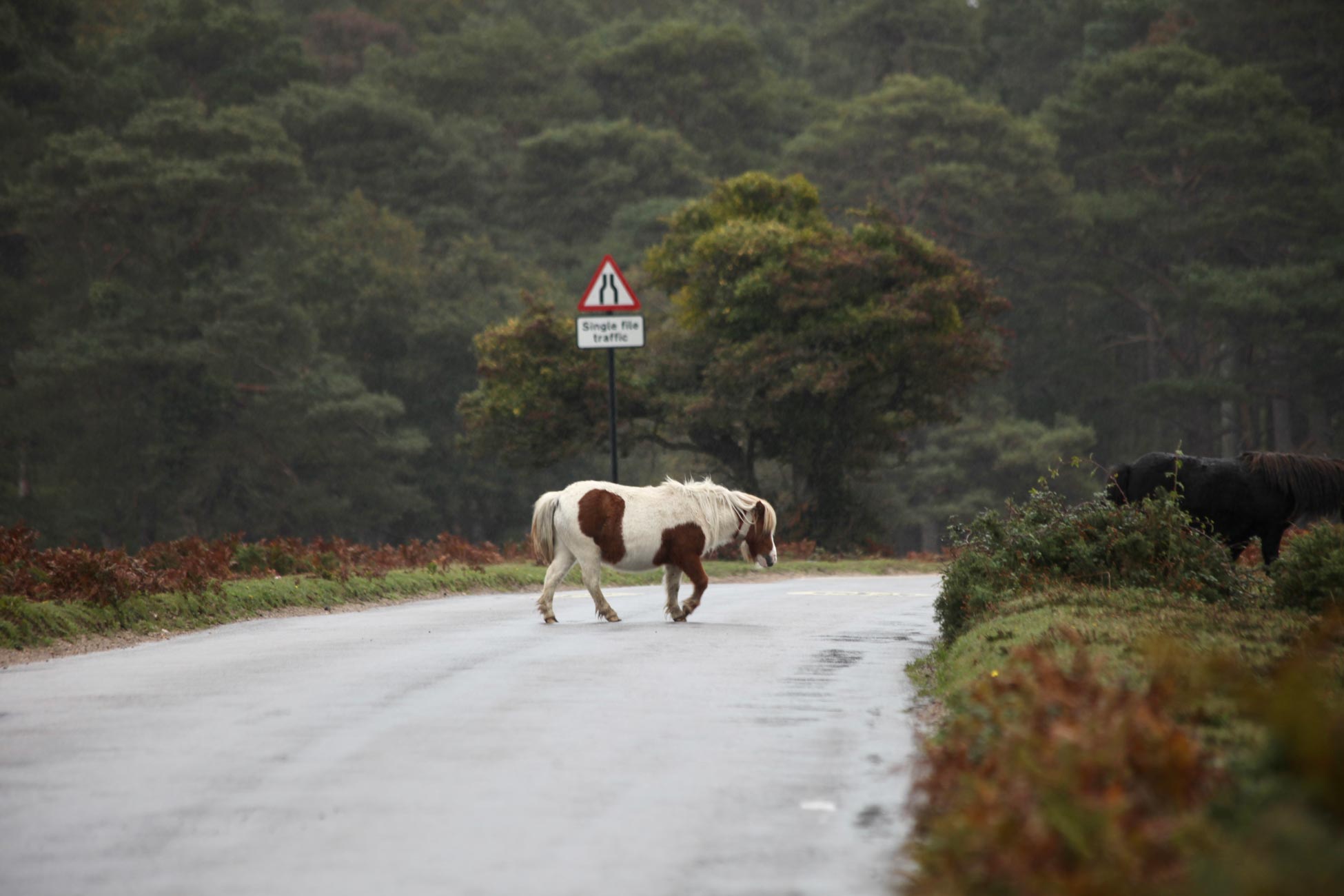
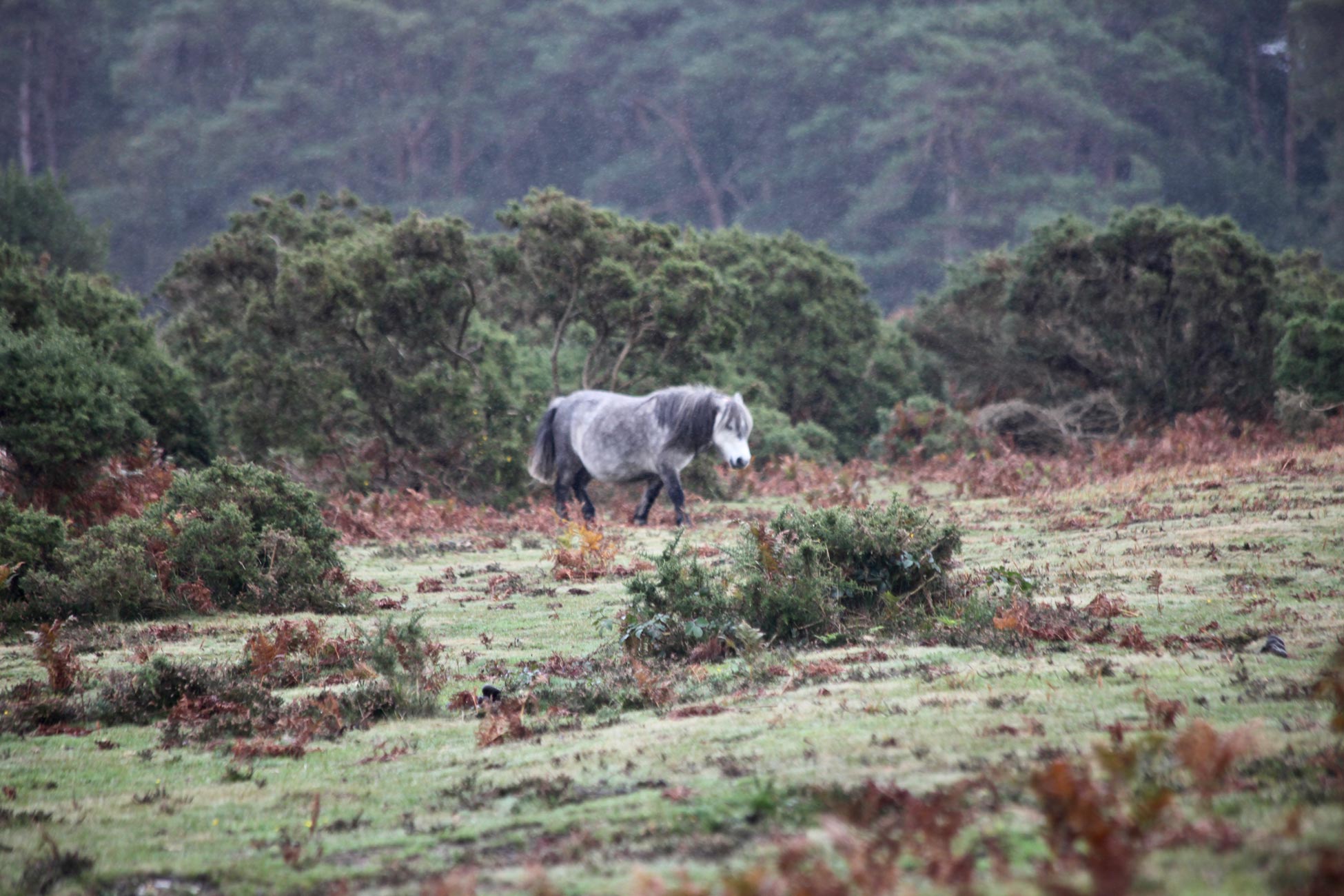
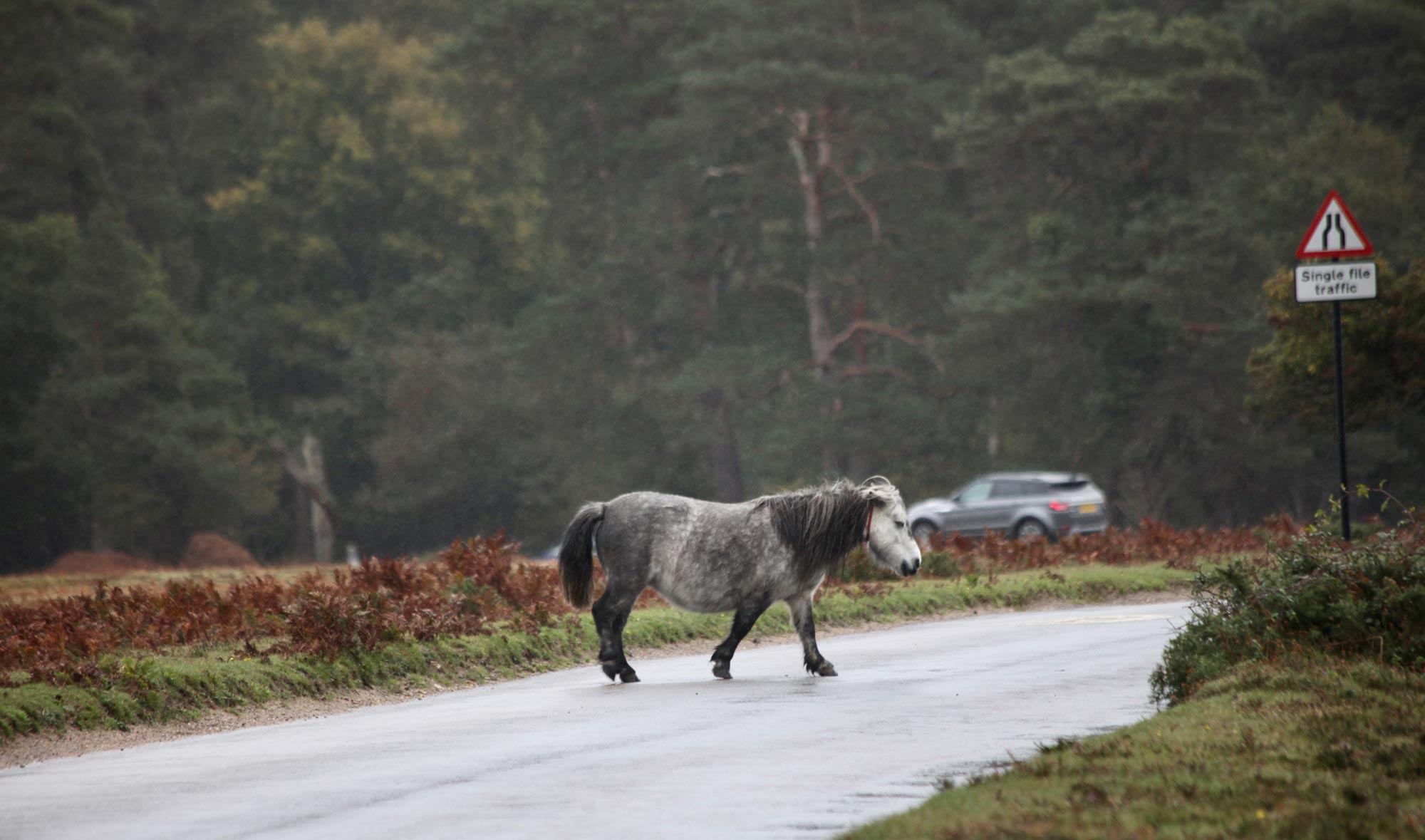
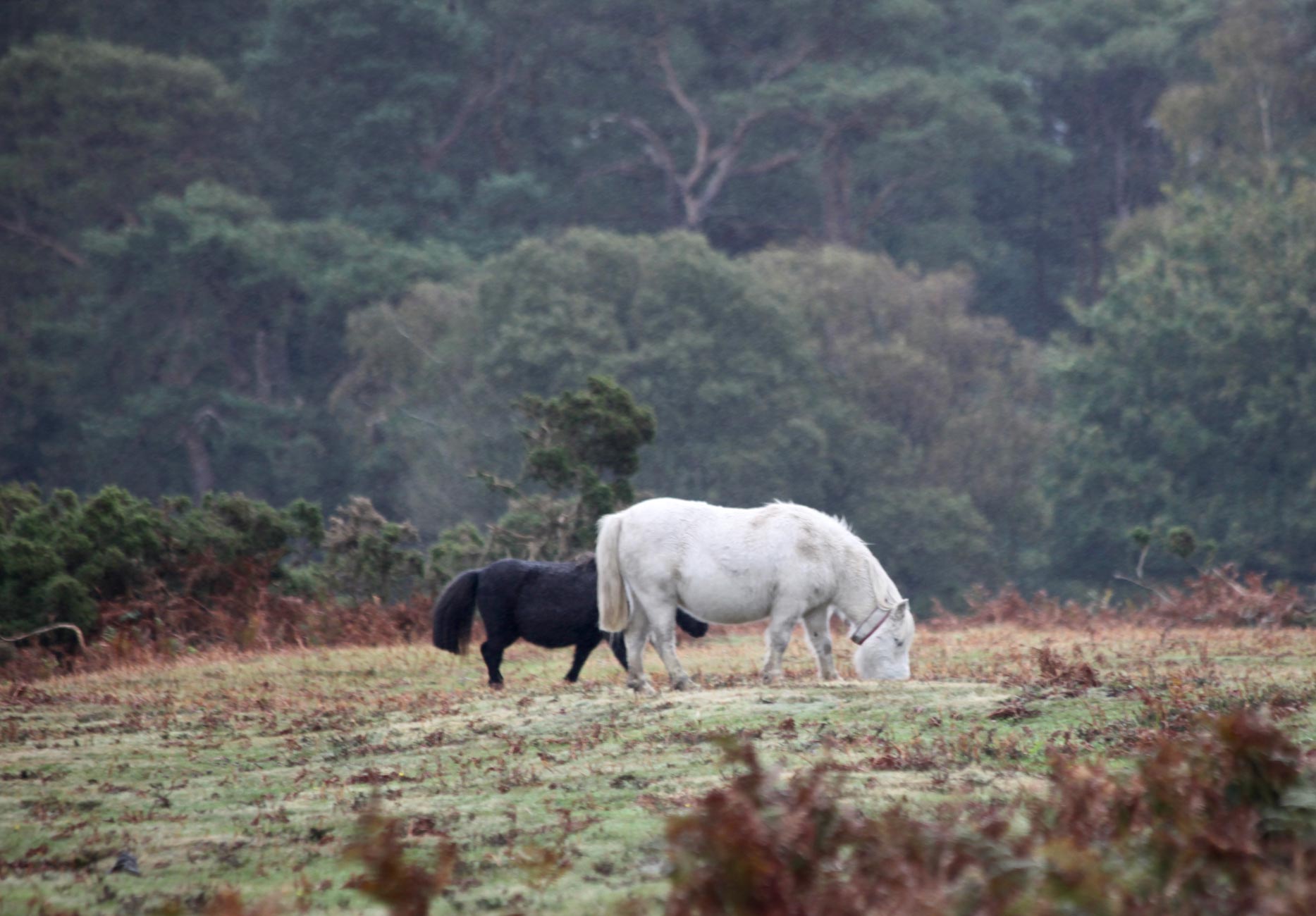
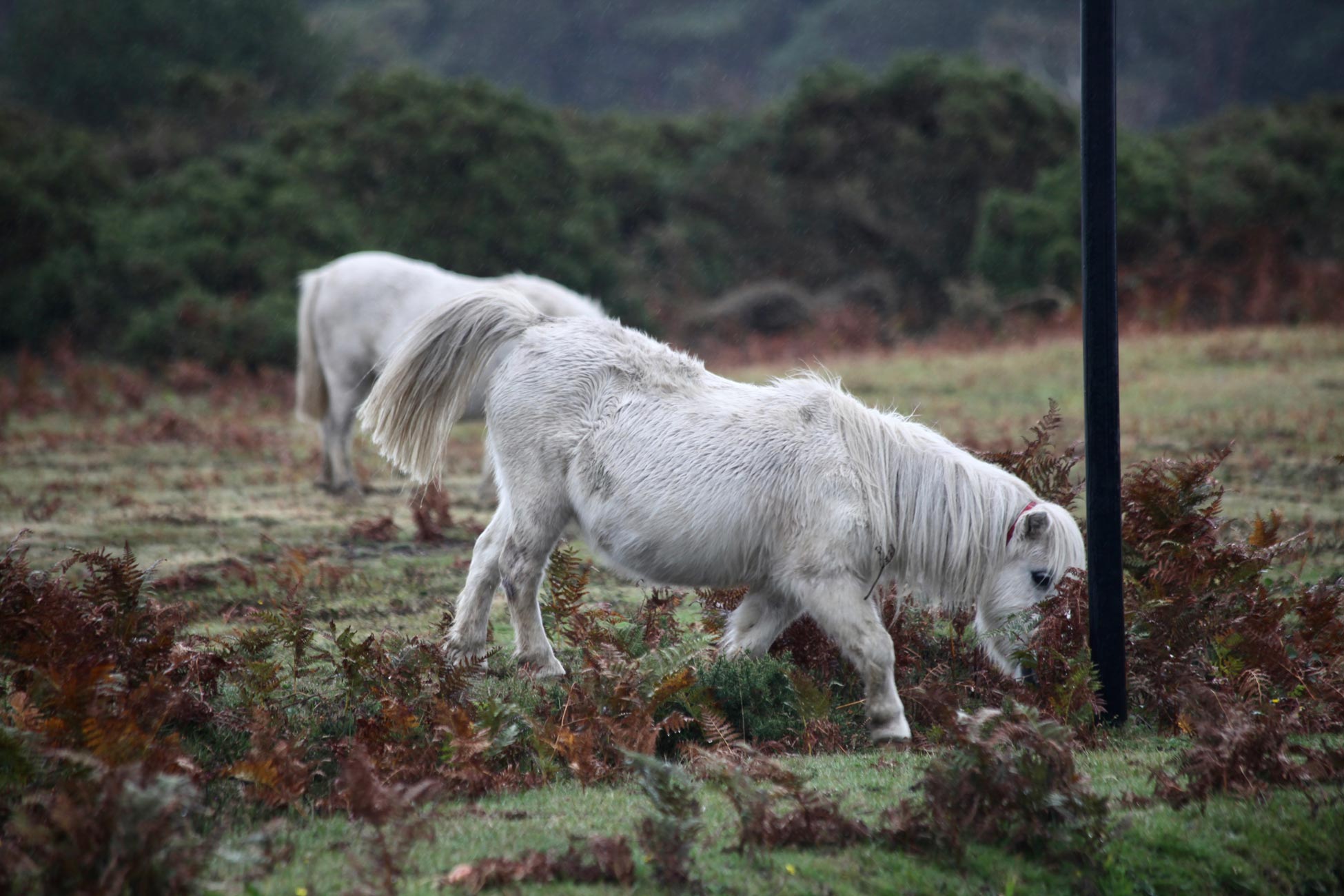
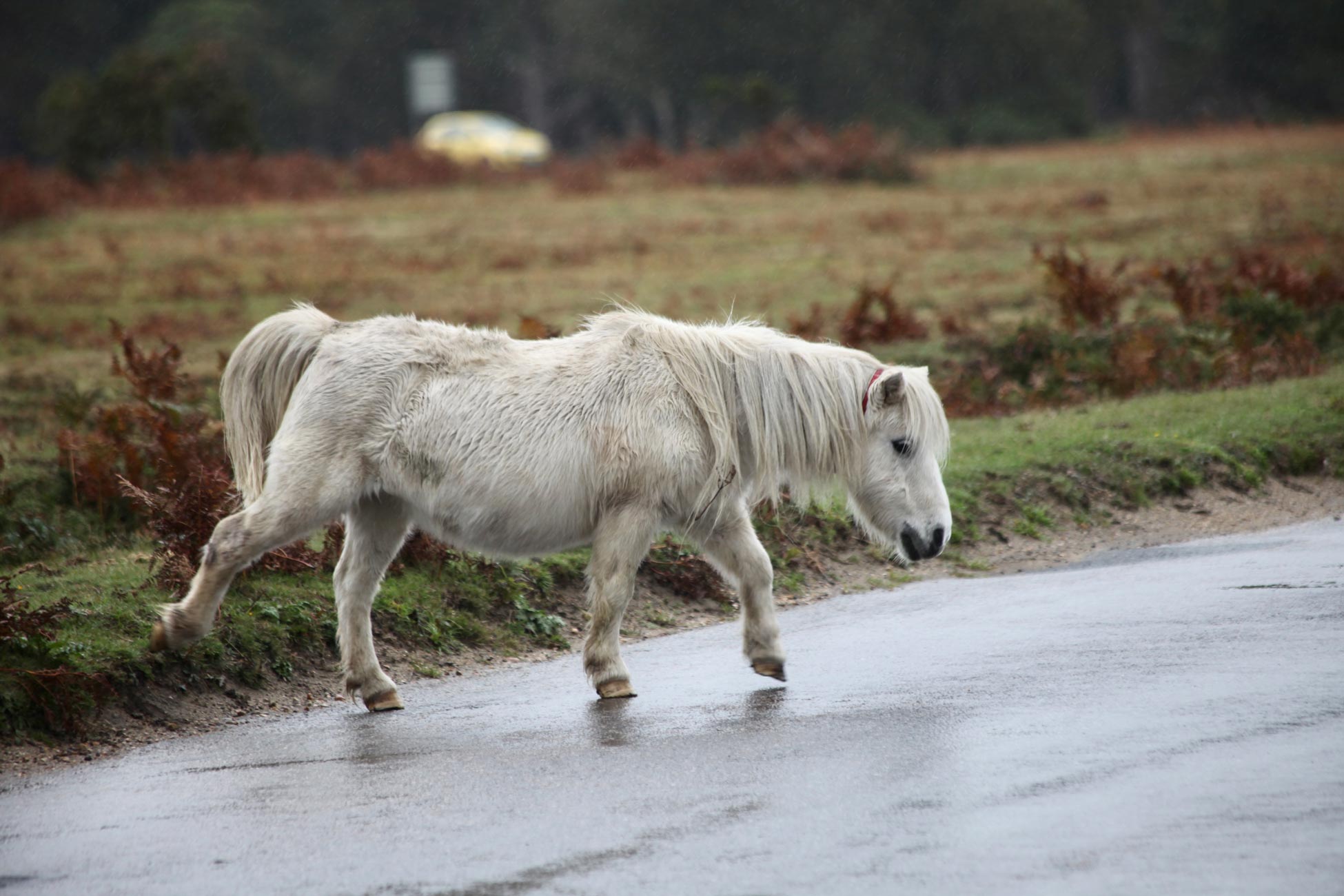
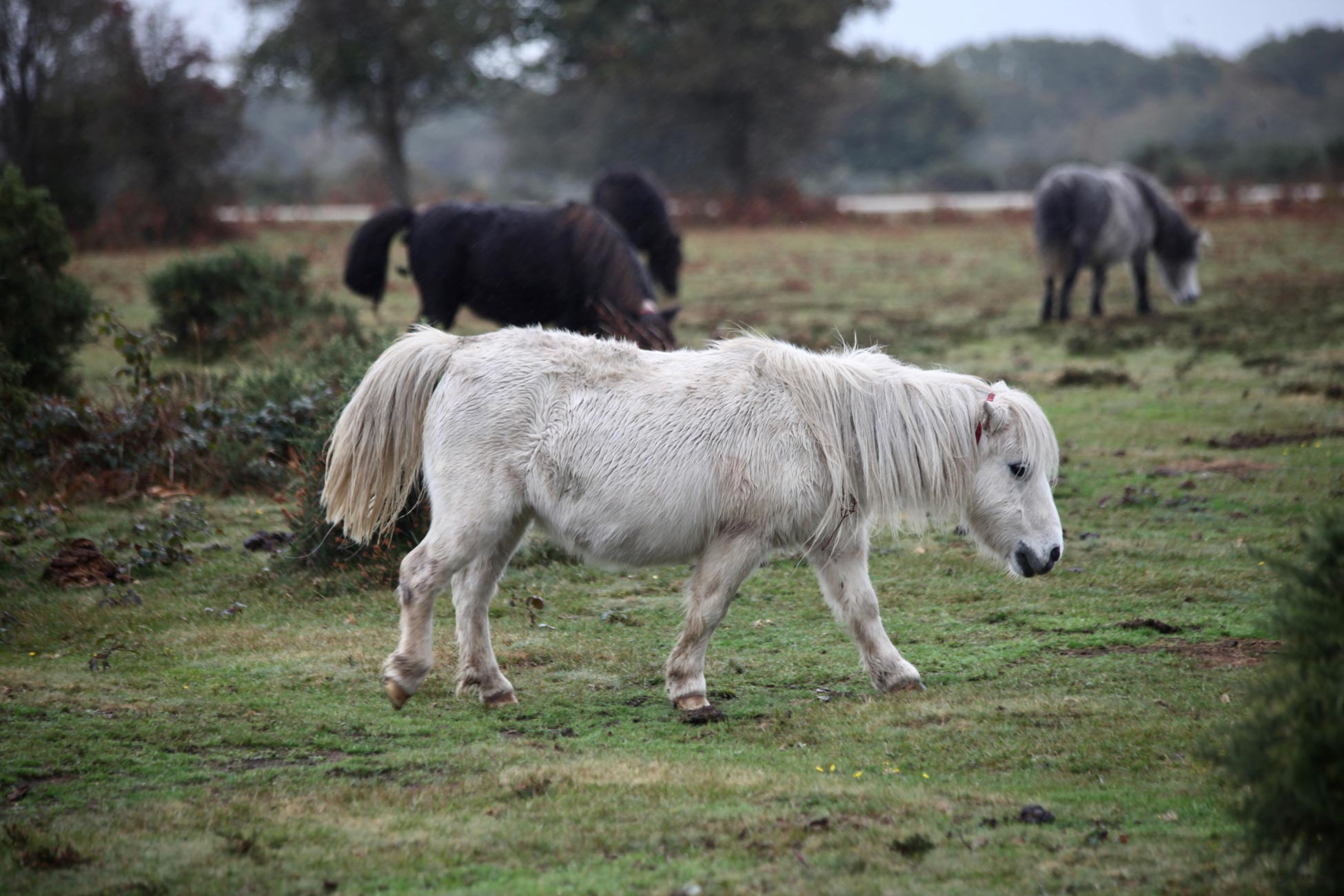

The usual group of Shetland ponies crossed Bull Hill in search of fresh pasturage among the gorse and heather. I got a bit wet wandering amongst them.
Virginia creeper draped over trees blended well with the fence around the land attached to the ramshackle house on Pilley Street.
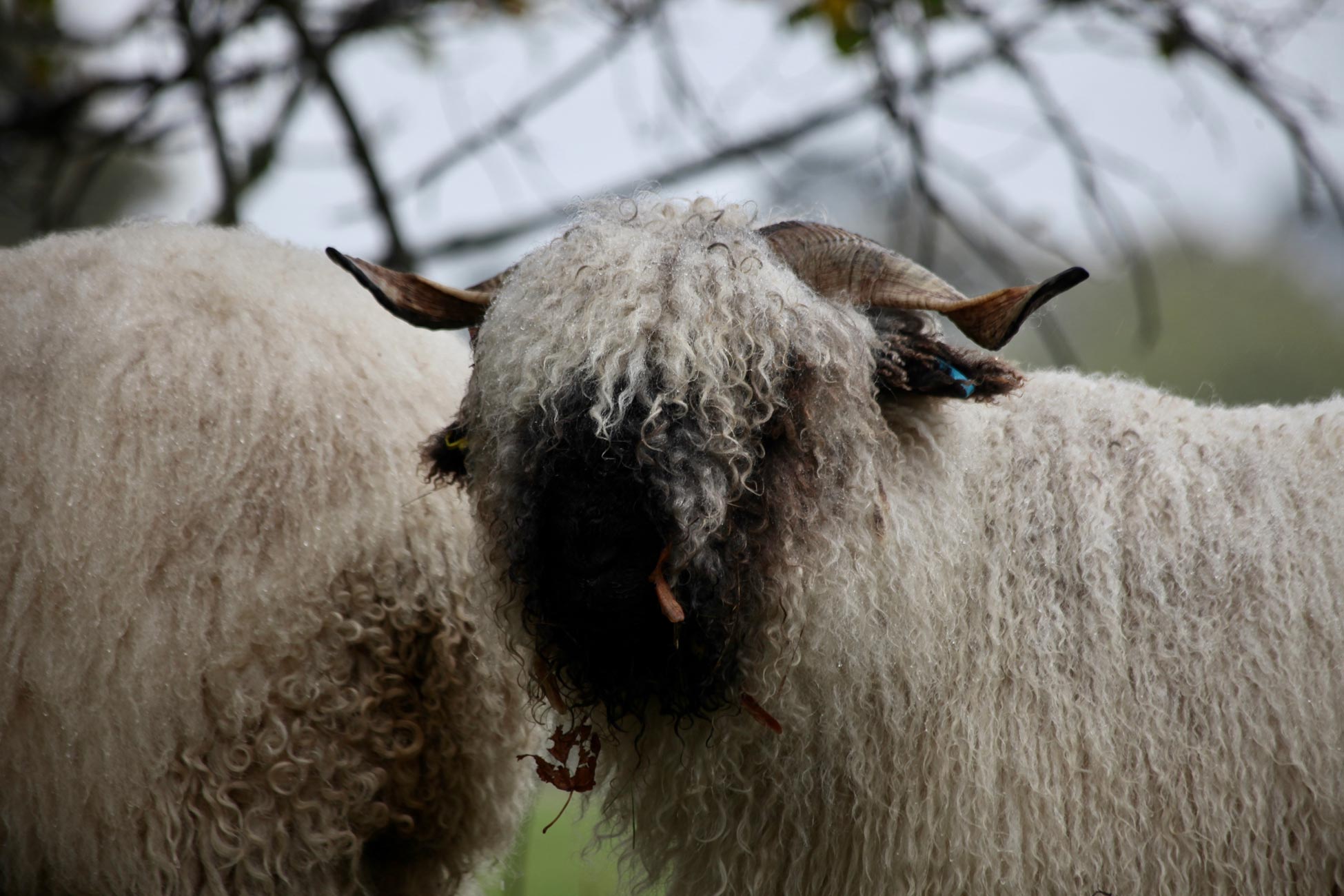

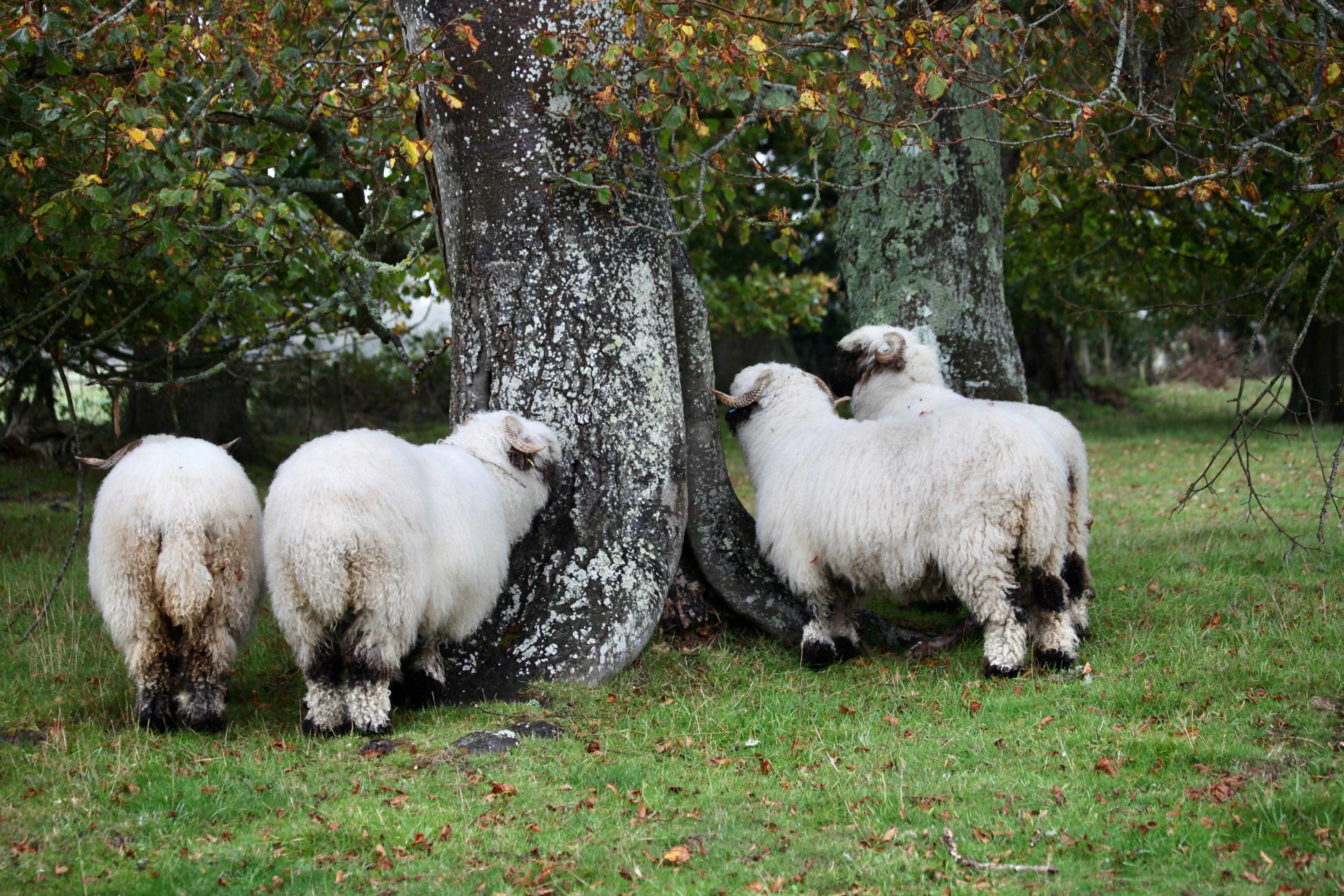
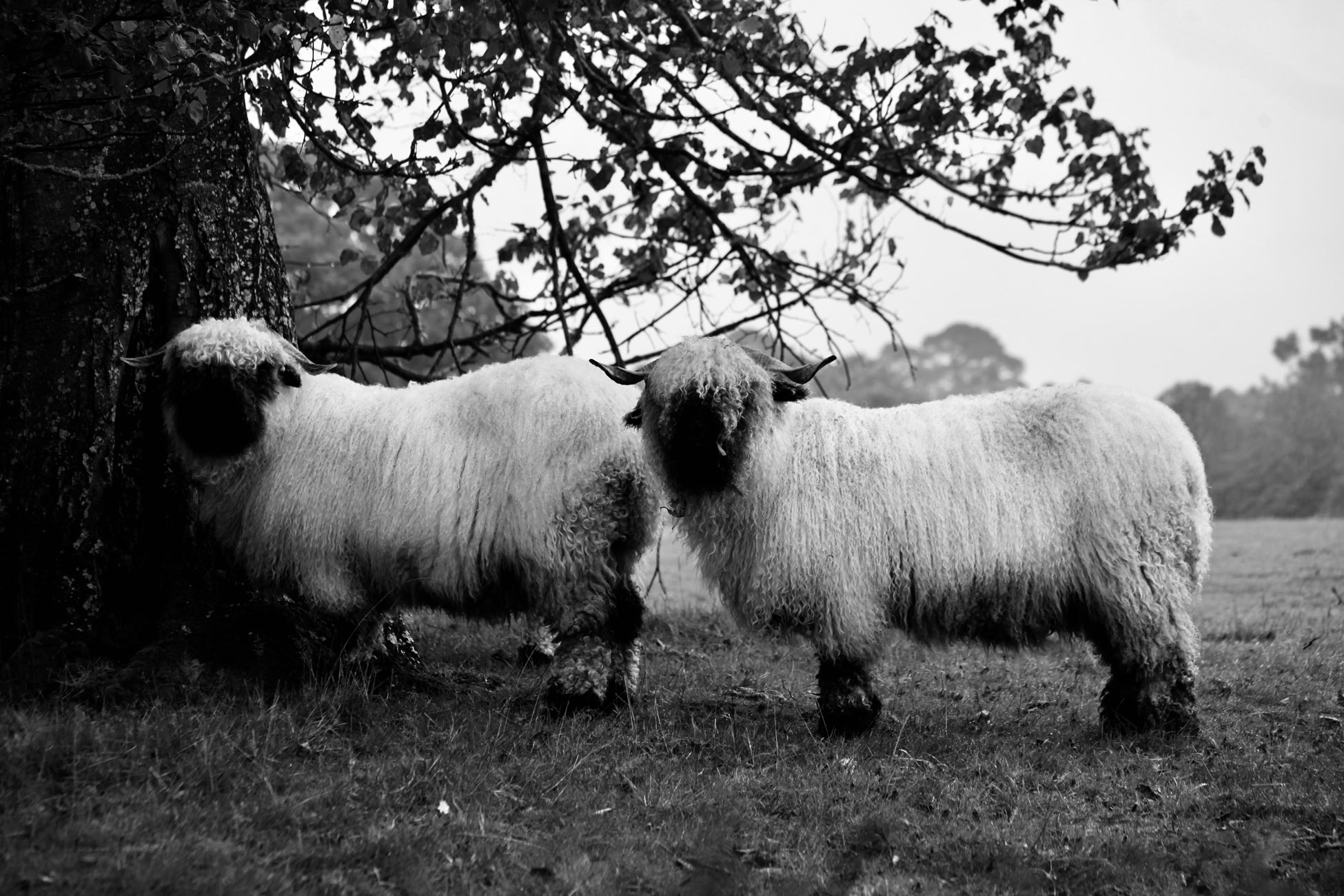
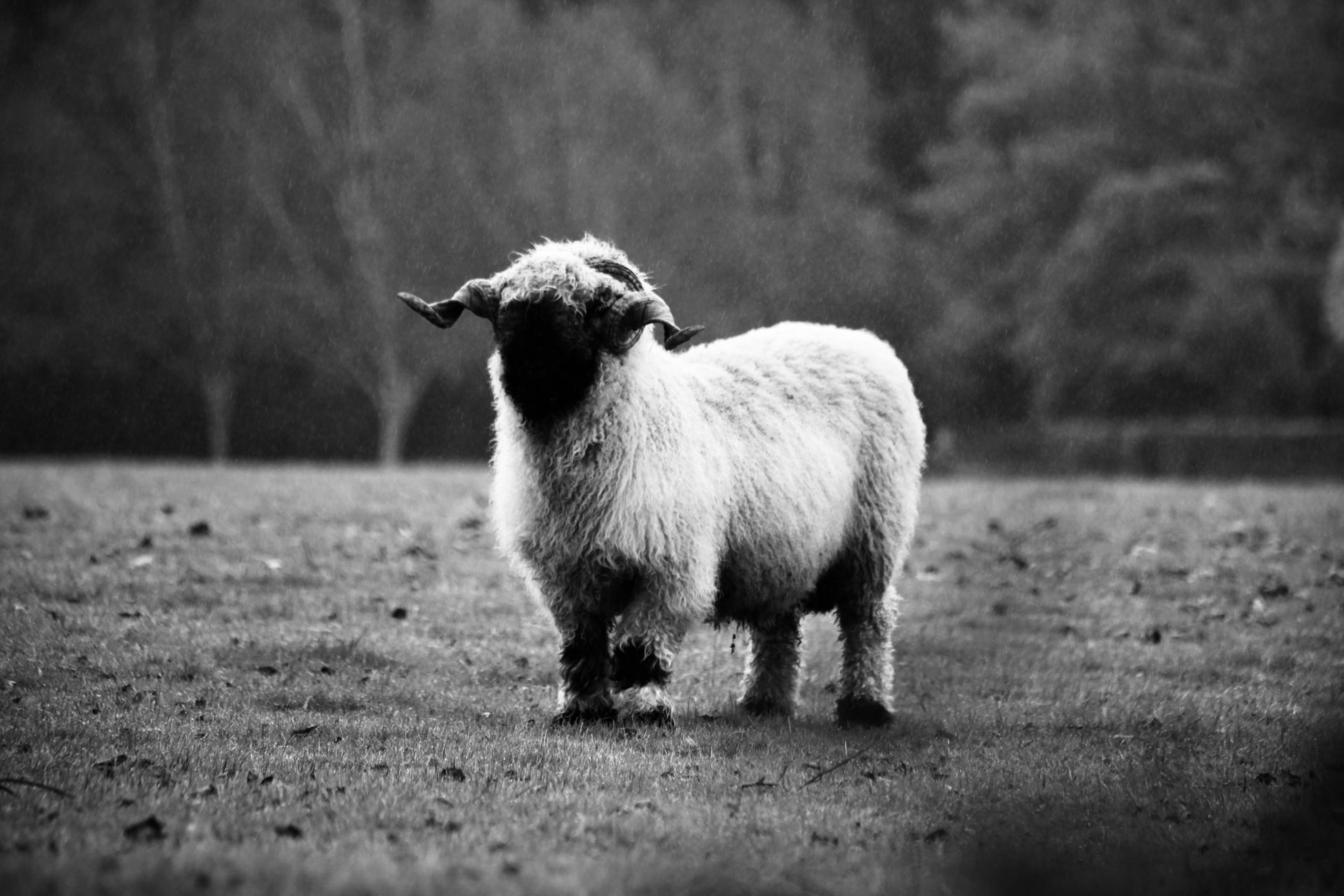

Alongside School Lane, Portmore, a small flock of Valais Blacknose sheep, a German breed originating in the Valais area of Switzerland, did their best to keep their prized wool dry.
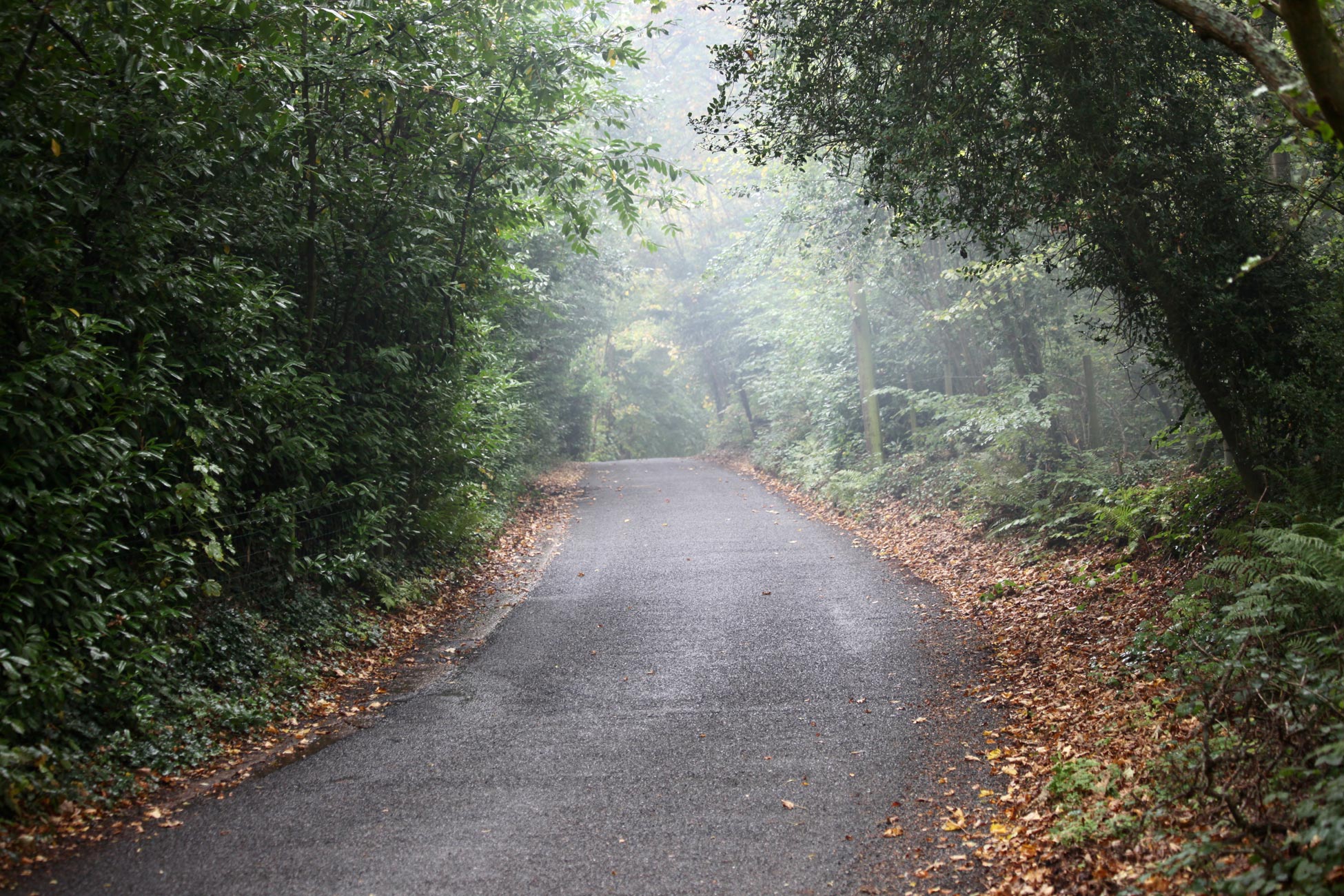
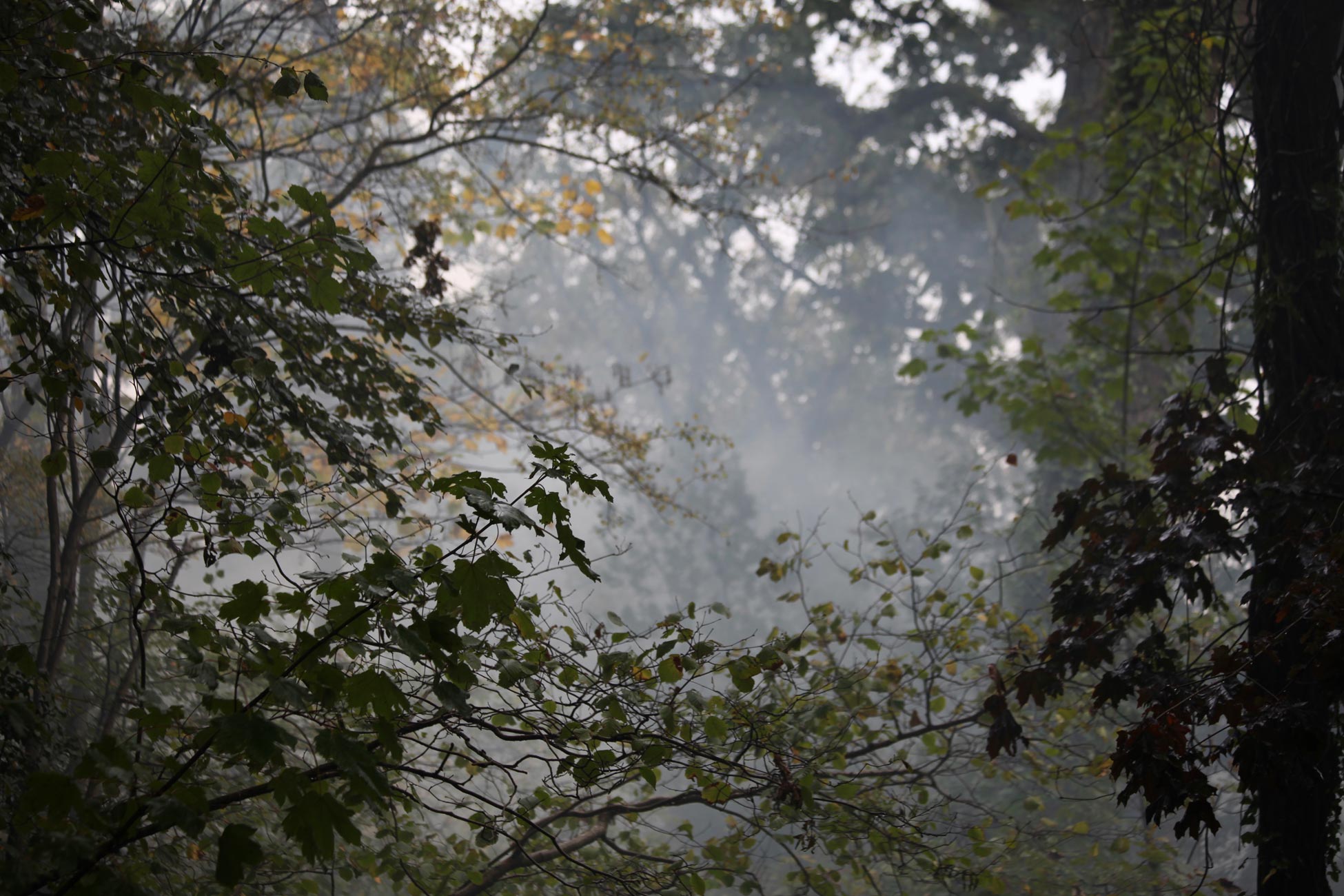
Smoke from a garden bonfire drifted across Hundred Lane, the origin of which I imagine being the Old English subdivision of a county or shire. These divisions had their own courts, and sometimes the term was applied to the court itself.
The Oxford English Dictionary states that the origin of the word ‘hundred’ is exceedingly obscure and that very diverse opinions have been given as to its origin. ’It has been regarded as denoting simply a division of a hundred hides of land; as the district which furnished a hundred warriors to the host; as representing the original settlement of the hundred warriors; or as composed of a hundred hides, each of which furnished a single warrior’ (Stubbs Const. Hist. I. v. §45).
’It is certain that in some instances the hundred was deemed to contain exactly 100 hides of land’ (F. W. Maitland).
As to the extent of the hide itself, the dictionary offers that ‘the general conclusion seems to be that it is equal to 120 acres although the area of the acre may vary.’
This evening the three of us dined on Jackie’s hot and spicy paprika pork; boiled new potatoes; crunchy carrots, cauliflower, and broccoli; and tender runner beans with which the Culinary Queen drank Hoegaarden, Elizabeth Hop House Lager, and I Séguret Cotes du Rhone Villages 2019.

We had a drizzle-dismal day too, Derrick. Your photos were certainly the bright spot. Those poor sheep give “bad hair day” a new meaning. Thanks for sharing.
Thanks very much, Jill.
Stunning photos sir on an awful weather day here.
Thanks very much, Gary.
Even in the drizzle you have some wonderful pictures.
Thank you very much, Mrs W.
Your welcome.
Thank girlie the history of a hundred
“simply a division of a hundred hides of land”
And lovely photos
Thanks very much, Yvette
What cute sheep!
Never seen them before, Sheree. Had to look them up. Thanks very much
Lovely outing, even if the weather was dismal.
Thanks a lot, Peggy
The pony photos have a three-dimensional quality like my old Viewmaster.
I’m happy about that, Liz. Thanks very much.
You’re welcome, Derrick.
Wet and dismal everywhere then.
I love the photos of the sheep keeping their faces dry.
🙂 Thanks very much, Sue
You had a very good selection of photographs to show for your rather gloomy journey. I liked the dancing pony.
Thanks very much, Tootlepedal.
The sheep are wonderful — and they look as if their wool coats keep them very dry in that rain. The horses, on the other hand, look a little down-trodden, bedraggled in the wetness of the rain!
I like the Virginia creeper and the misty fog.
Thanks very much, Sherry. I’m pleased.
The sheep look a little sinister to me. No faces! On the other hand, I think I might have been a Shetland Pony in my last life and if there is any justice I’ll be one in my next life, too. I tried to finish a bottle of Stoneleigh Sauvignon Blanc but gave up. More for tomorrow!
Thanks very much, Sue. I agree about the no faces. Enjoy the rest of the bottle.
I love those sheep! You must be very near to Elizabeth to be able to both visit each other in one day.
Thanks very much, Jodie. 15/20 minute drive.
Ah, so nice to be close!
Still beautiful photos even if a drizzly day.
Thank you very much, More.
You’re welcome Derrick
beautiful photos even on drizzle-dismal day, Derrick. as always, the ponies and sheep are delightful! excellent header photo! 🙂
Thanks very much, Lola
I have never heard that term before. No surprise!
🙂 Thanks a lot, Laurie
It seems the origin of hundred is as dark as the countenance of those German sheep. Having never set my eyes before on the breed, I am surprised at the density of blackness from whom no light seems to be able to escape.
Nicely observed, Uma. I’ve never seen them before, either. Gwen has given a bit more information in her comment.
Uma I love your words. Your first sentence sums it up beautifully, I always look forward to your comments.
That’s an honour!
Those Shetlands look well-fed going into the season. They are sweet!
I enjoyed reading about the origins of “hundred”. I always learn something new here!
Thank you so much, Lavinia
Precious ponies!
Sweet sheep!
Interesting info! (on hundred)
Marvelous meal!
Delightful day!
(((HUGS))) 🙂
Thanks very much, Carolyn X
A hundred hides, or a hundred warriors, the origins are fascinating … thank you for this curious historical snippet Derrick..
Thanks very much, Ivor.
The muster (I’ve forgotten your local term) has resulted in ponies with very tidy tails. Won’t reach as far for fly-swatting but since autumn seems definitely to have descended on you, perhaps the flies have flown south.
I just read an article that the Valais are voted the “world’s cutest sheep”, and that a couple in Devon are breeding them as pets, and that they “typically sell for up to £7,000 but the most attractive rams can fetch £10,000.” Apparently they are both meat and wool sheep, used in felting and carpet, rather than clothing as our fine merino. Let’s see what happens to your neighbourhood gang.
Thanks very much, Gwen. Our muster is called The Drift. Yes, the flies are gone. Fascinating prices for those sheep.
Ah yes, the term was drifting around the edges of my memory 😀
🙂
Those Valais Blacknose sheep are remarkable. I’ve looked very closely at them, and they don’t appear to have any facial features, just a mini-black hole.
That is just how they look, John 🙂 Thanks very much.
I recall being intrigued by the procedure of applying to the Chiltern Hundreds as a the way of resigning as an MP.
Thanks a lot for this further info, Andrew
Those B & W photos are wonderful. Are some of those ponies pregnant?
Could be – but they are chubby little creatures. Thanks very much, Arlene
We also had a drizzly, dismal, dreary day yesterday. I do like though how the bright colors stand out against the grey sky. The photo of the black and white ponies caught my eye, as did the bright flowers, but lots of beautiful photos. Thank you for those, and also for the discussion of “hundred.” There was an early settlement in 17th century Virginia called Martin’s Hundred.
That is interesting, Merril. Thank you very much
The smoke coming down the lane certainly causes an ominous scene. Terrific catch, Derrick.
Thanks very much, GP
I like your drizzle-dismal day – the phrase, not the weather! The Pekingese sheep are highly photogenic. I’ve recently realised that I have lost one half of my shorter OED.
What a shame about your OED. Thanks for liking my phrase, Susan
I love the black/white images of the sheep.
Thanks very much, msw
Poor wet ponies don’t look too happy with this weather. The black and white sheep seem to be indifferent to the rain, though. I appreciated the quaint, fascinating explanation of the term “hundred.” Only in England, I think!
And in some American States, I believe, Dolly. Thanks very much
My pleasure, Derrick.
That white pony crossing the street is cute 😍 Gorgeous photos as always! Is worth it all the wet 😉
Delicious dinner in good company 😉😋
Thank you so much, Ribana
1 – There is not a lot more miserable than a horse with wet hair hanging over his eyes. 2 – A producer of fine wool in Australia would be very careful not to let any sheep with any coloured wool anywhere near the shearing shed. Any touches of black in any sample bale would cut his income dramatically.
Thanks very much for these observations from one who knows, John.
In reality a wet horse is probably not as miserable as the person in the saddle at about the same time.
🙂
I came across that reference to land being in hundreds when researching hubby’s great great grandfather a South Australian colonist. I’ve heard that in NSW one could claim the land that one could ride around in a day, in SA things must have been a little more orderly.
Thanks very much, Lindsey. Fascinating history.
Gorgeous wool on these Blacknose sheep! Love your photographs of them.
So interesting about the ‘hundred’.
Thank you very much, Inese